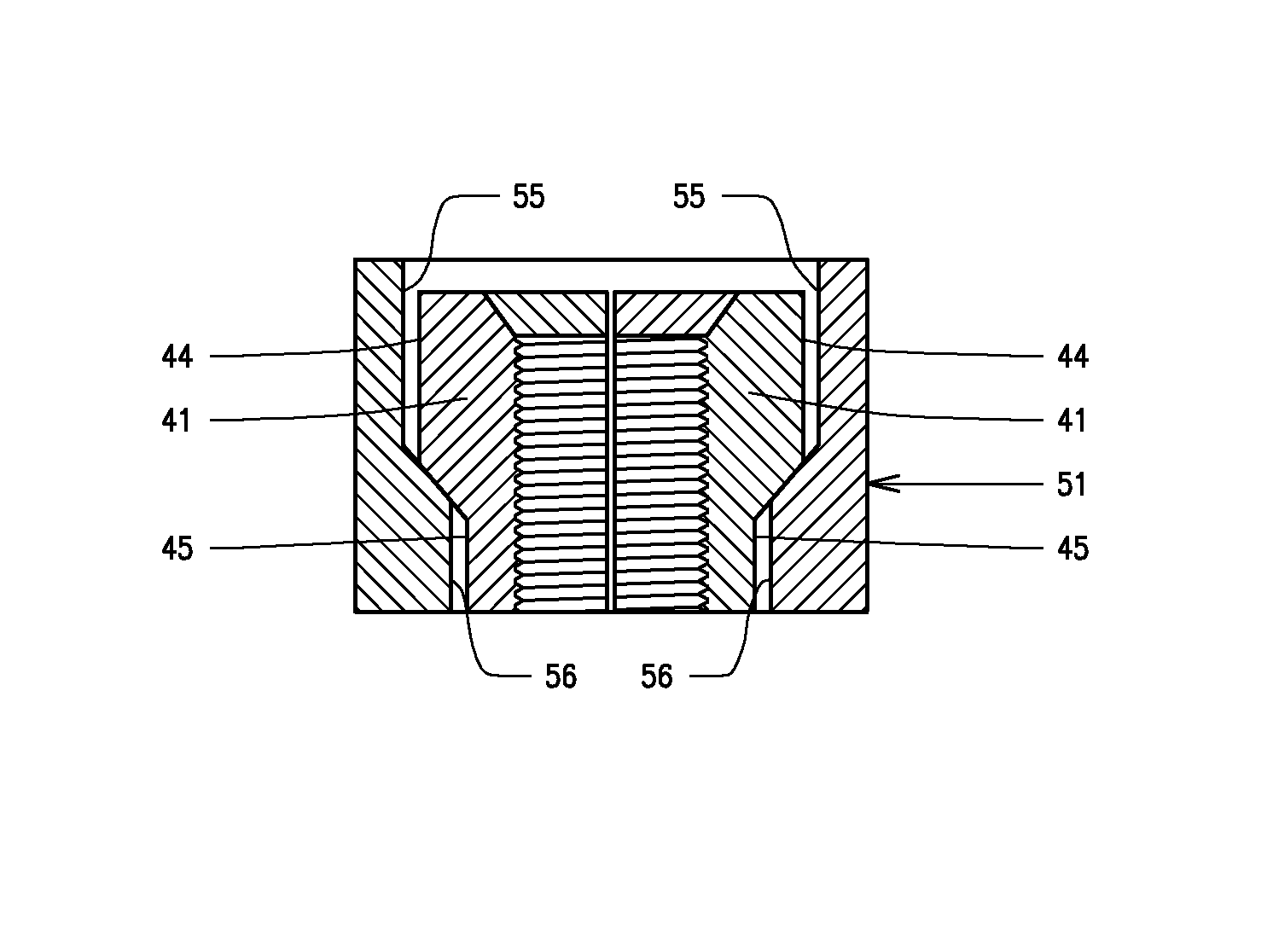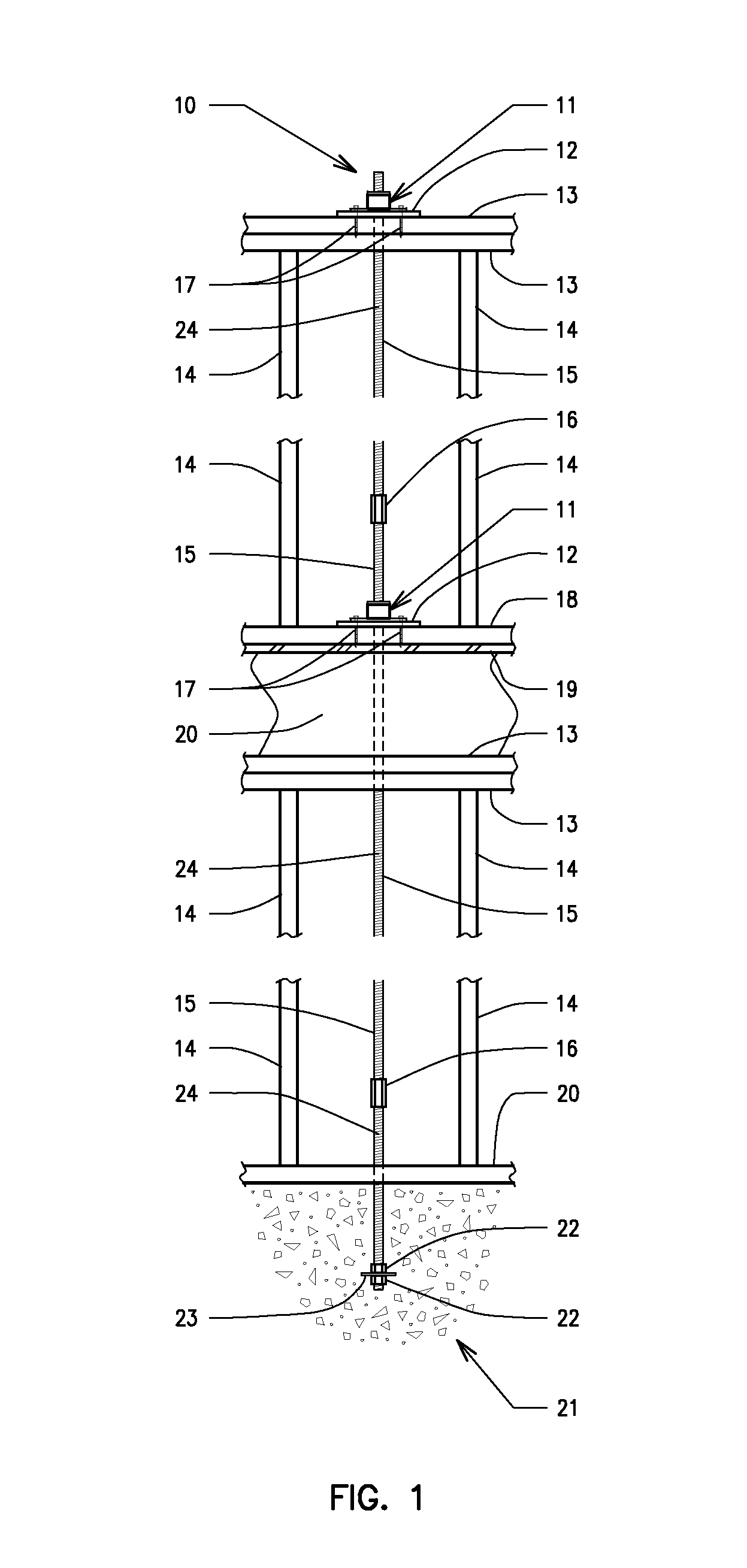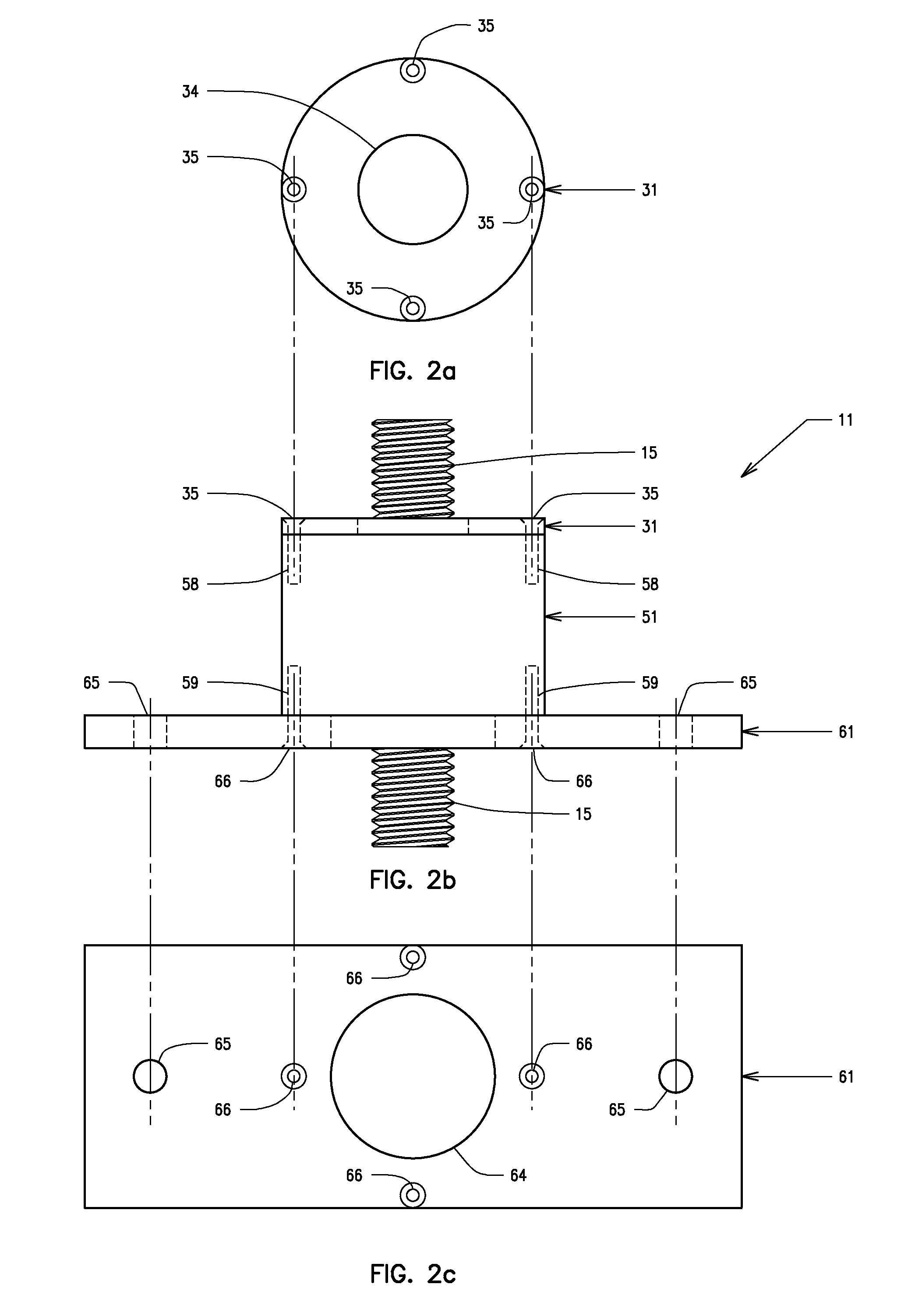Ratcheting-type shrinkage compensating device for use in continuous tie-down systems
a compensating device and continuous tie-down technology, applied in the direction of screws, threaded fasteners, mechanical equipment, etc., can solve the problems of little or no tolerance for any misalignment between the rod and the rt-scd, and the inability to provide a means of assistan
- Summary
- Abstract
- Description
- Claims
- Application Information
AI Technical Summary
Benefits of technology
Problems solved by technology
Method used
Image
Examples
Embodiment Construction
[0064]An embodiment of a CTS 10 that might be used in a multi-story plywood shear wall system to impart tie-down forces is illustrated in FIG. 1. CTS 10 will typically include a plurality of rods 15 interconnected with couplers 16, with one end of the lower rod 15 secured to a concrete foundation element 21 with an anchor plate 23 and nuts 22. Rod 15 will typically be provided with rod deformations 24, which will typically consist of a standard thread profile, but can also consist of a custom or specialized thread profile, or unique deformation pattern.
[0065]The CTS 10 is typically located equidistant between studs 14, and extends from foundation 21, through a sill plate 20, top plates 13, rim joist and / or blocking 20, plywood sheathing 19, sill plate 18, and top plates 13. The CTS 10 is secured to various building elements at the various levels of a multi-story plywood shearwall system, including sill plates 18 and / or top plates 13, with an RT-SCD 11 and base plate 12. Each RT-SCD ...
PUM
 Login to View More
Login to View More Abstract
Description
Claims
Application Information
 Login to View More
Login to View More - R&D
- Intellectual Property
- Life Sciences
- Materials
- Tech Scout
- Unparalleled Data Quality
- Higher Quality Content
- 60% Fewer Hallucinations
Browse by: Latest US Patents, China's latest patents, Technical Efficacy Thesaurus, Application Domain, Technology Topic, Popular Technical Reports.
© 2025 PatSnap. All rights reserved.Legal|Privacy policy|Modern Slavery Act Transparency Statement|Sitemap|About US| Contact US: help@patsnap.com



